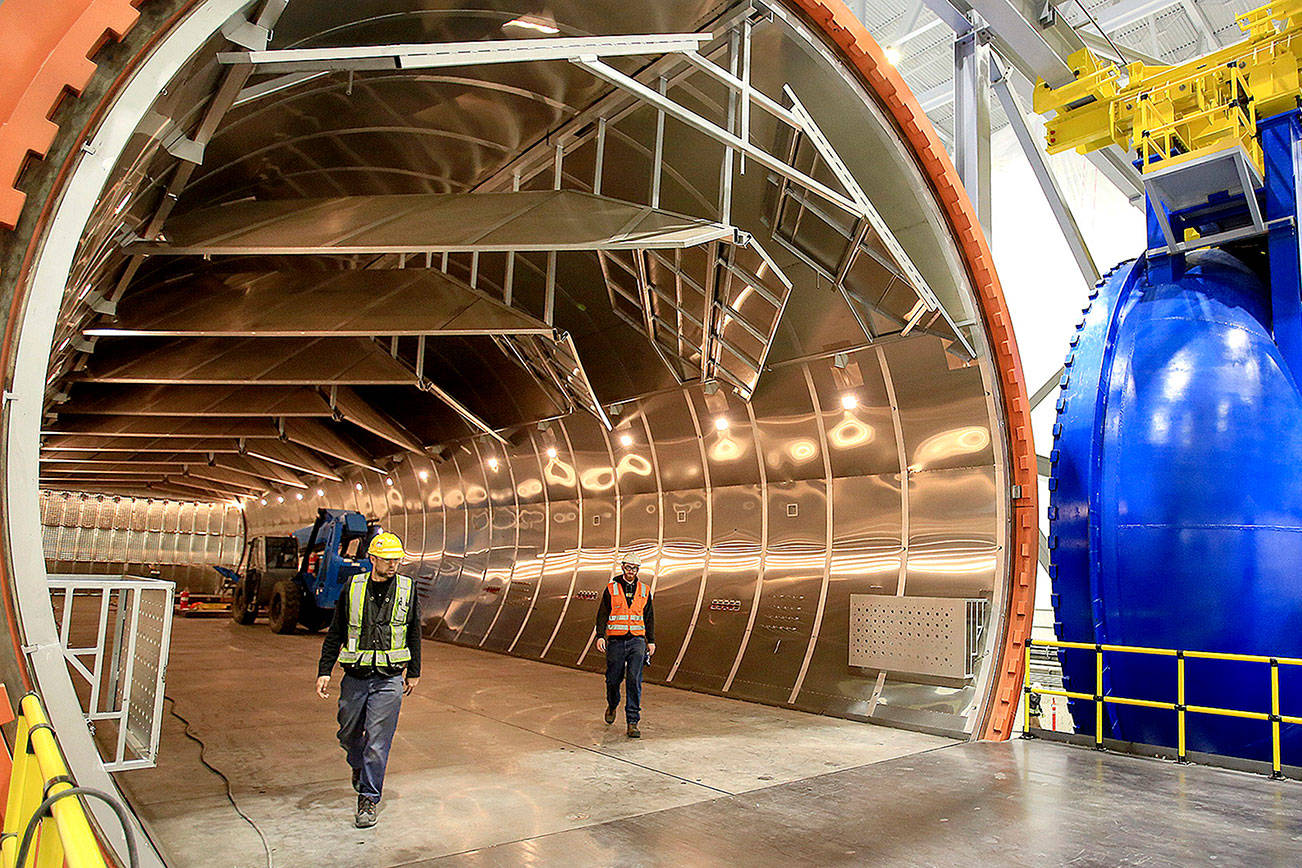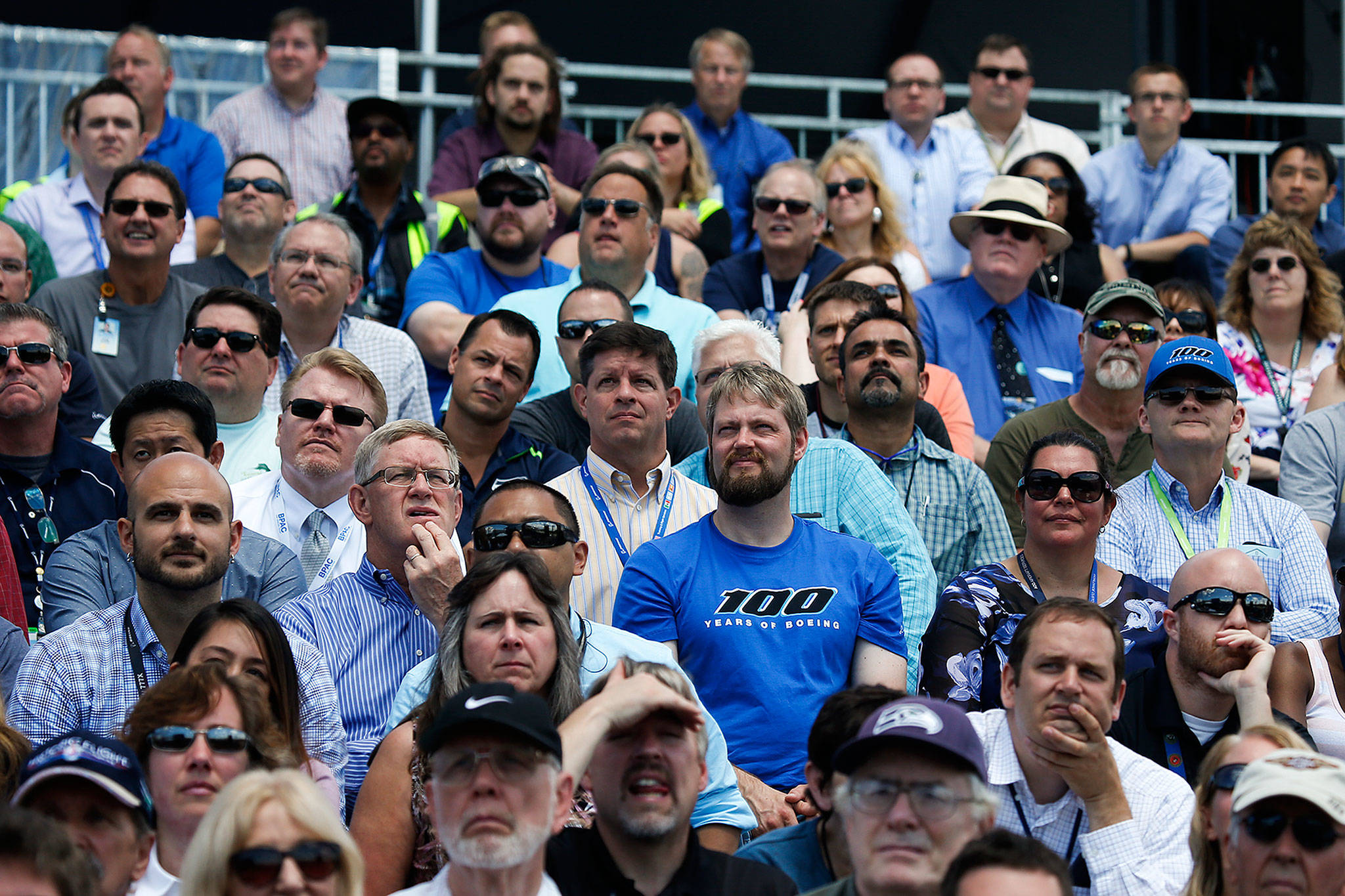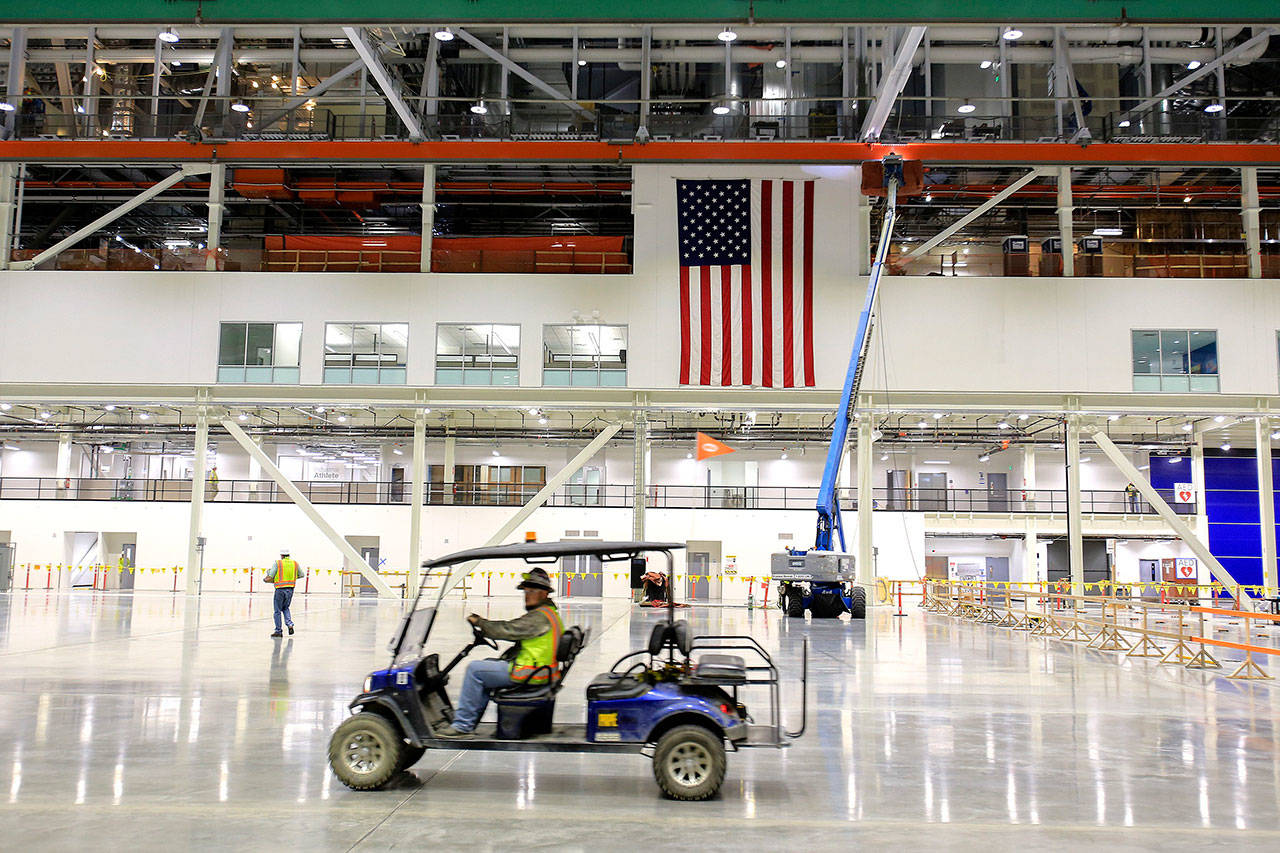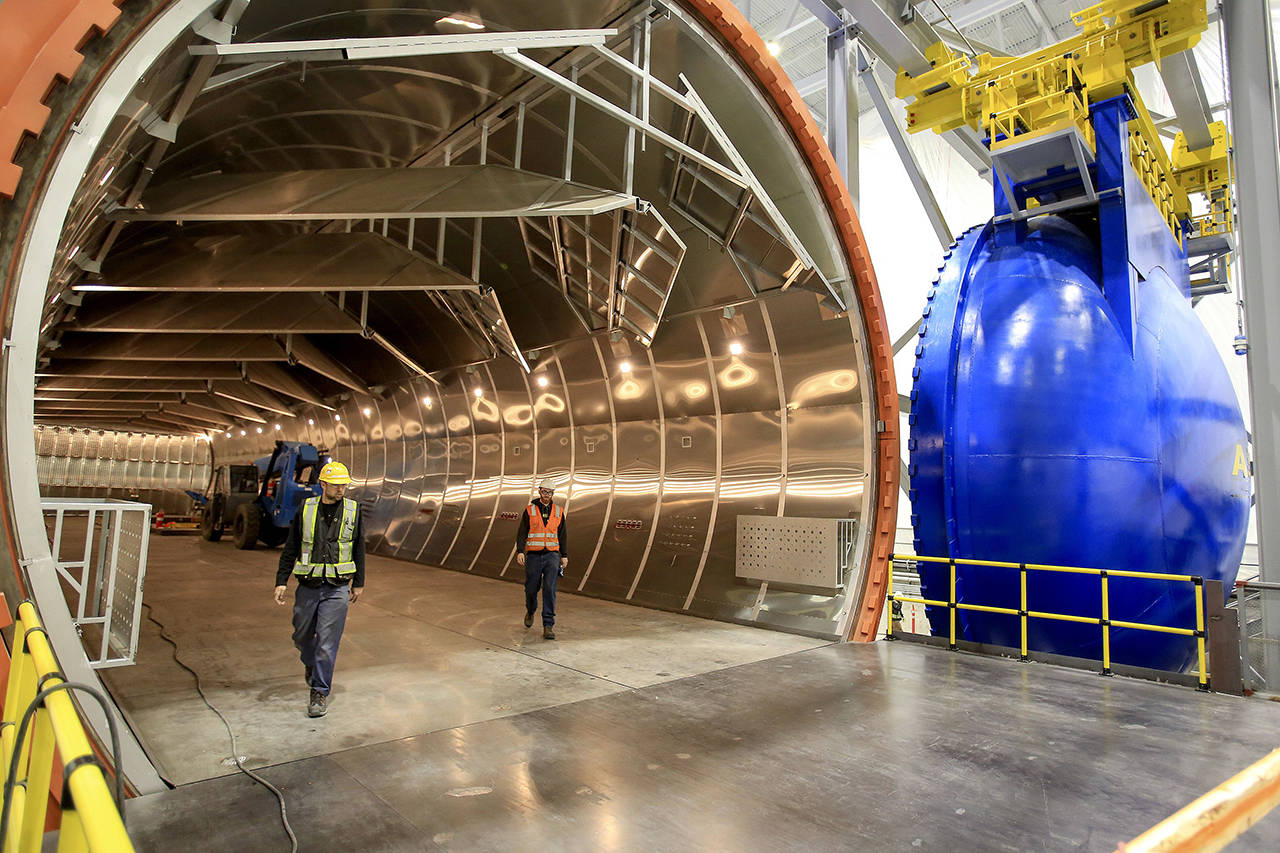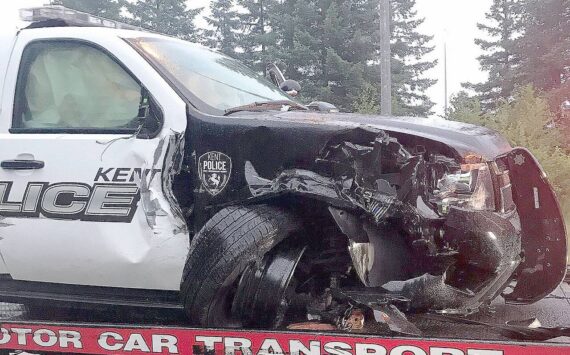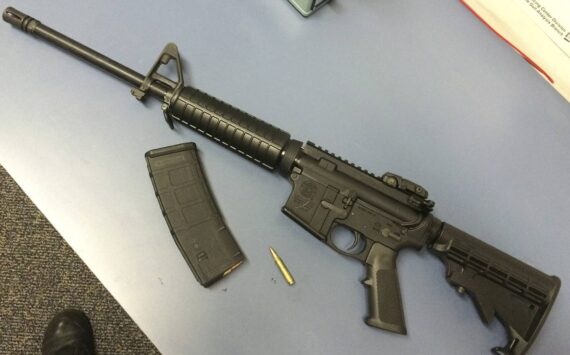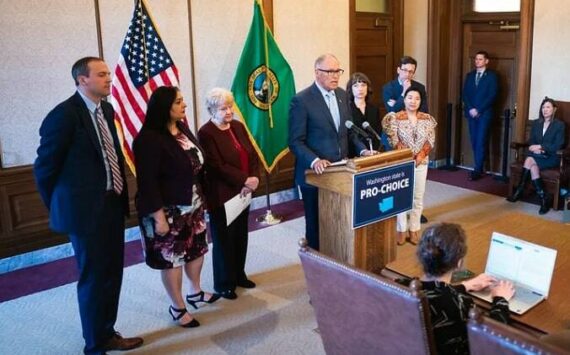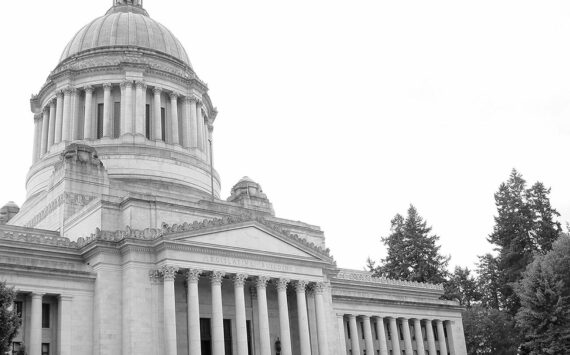OLYMPIA — Nearly six years after lawmakers extended a lucrative tax break to the Boeing Co., it’s not certain if those incentives convinced the aerospace giant to build the 777X in Everett, a new state report concludes.
The company’s decision to do final assembly of the new jetliner and build a composite wing facility in Washington ensured the 2013 extension took effect.
But it “is unknown whether the company would have made this location decision even if the preferences had not been extended,” concludes the report delivered Wednesday to the Joint Legislative Audit and Review Committee, a bipartisan and bicameral panel of lawmakers.
And committee staff also could not determine if the tax breaks helped maintain and grow the aerospace industry, an objective set by lawmakers. There are more aerospace workers now than in 2003 but fewer than in 2013. They were unable to find a “causal relationship” between the legislative actions and employment levels, according to the analysis.
Lawmakers received the report but took no action. It will go to the Citizens Commission for the Performance Measurement of Tax Preferences, where it will be discussed Aug. 1.
On Sept. 5, the commission will accept public testimony on the findings. Then, in October, it will make recommendations on potential changes in the existing tax-break law that could help determine if the tax breaks are working as intended.
State lawmakers and then-Gov. Gary Locke enacted incentives for the aerospace industry in 2003 to land the Dreamliner assembly line for Washington. Those tax preferences were to expire in 2024.
During a November 2013 special session, legislators and Gov. Jay Inslee agreed to a 16-year extension, to 2040, to help convince Boeing to build the 777X in the state. It is projected the extension will enable aerospace firms to save close to $8.7 billion in tax payments, nearly all of it accruing to Boeing.
At the time, Inslee said company officials committed to build the new commercial plane in the state if the International Association of Machinists and Aerospace Workers (IAM) agreed to terms of a revised contract, which included concessions on pension and health-care benefits.
Machinists eventually did, and the deal was done. But Boeing officials have never publicly said whether the tax breaks influenced their decision.
In preparing the report, committee staff posed the question to company officials but did not receive an answer.
[infogram id=”5030ca4d-1f3e-4db2-aff6-591062d8173b” prefix=”ObA” format=”interactive” title=”Washington aerospace employment”]
The purpose of the report was to examine whether the tax breaks were doing what lawmakers wanted them to do for the aerospace industry — namely, reduce costs for businesses, preserve their industry, ensure good-paying jobs and “maintain and grow” the aerospace workforce.
Costs are lower and workers are earning good wages and getting good benefits, they found.
Washington’s tax rate, slashed since 2003 for the industry, is among the lowest in the country for aerospace firms.
Boeing alone saved $230 million on its tax bill in 2018 thanks to the reduced rate. And it has saved $1 billion in tax payments to the state since 2015 based on annual disclosure filings required by the state.
Workers, at least at the companies taking advantage of the incentives, are paid well. On average, workers at Boeing, which numbered 69,800 in 2018, and those at other firms using the tax breaks earned more than $100,000 a year in 2016 and 2017, according to the report.
But the committee’s research staff couldn’t determine whether extending the tax preferences caused leaders of Boeing to choose Washington for its newest jetliner.
And they couldn’t find a clear link between extending the tax breaks and the goal of maintaining and growing the industry.
Washington has the nation’s highest concentration of aerospace companies. The industry’s estimated 86,000 workers here are the most of any state.
[crowdsignal poll=10365979]
The state added 34,500 aerospace jobs from 2003 to 2012, of which 32,400 were at Boeing, according to the report. Then, from 2012 to 2018, Boeing slashed 16,700 jobs, about half of those since the extension of the tax breaks. Overall, in those six years, aerospace employment dropped by 10,800 as hiring at other firms helped offset cuts at Boeing.
The tax preferences might have prevented greater job losses, the report says, if they are the reason Boeing chose to build new planes in Washington rather than in another state. If not, the tax breaks reduced government spending — a result of receiving less tax revenue — and may have contributed to job losses.
Unable to assess if the tax break is spurring job creation, the legislative auditor’s office is recommending the Legislature “clarify its expectations for the level of aerospace employment” associated with them. That could mean setting specific targets to be met.
Frustration at the decline in their ranks led leaders of the Society of Professional Engineering Employees in Aerospace (SPEEA) and the Machinists union to try to get terms of the tax incentives revised. Over the course of several legislative sessions, bills were introduced that would have made Boeing pay a higher tax rate if its workforce dropped below certain levels.
No bill ever reached the floor of the House or Senate.
Jerry Cornfield: 360-352-8623; jcornfield@herald net.com. Twitter: @dospueblos
